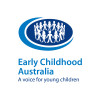Bean bag bucket basketball

Bean bag bucket basketball
A fun way to get active!
Materials Required
- 5-10 bean bags/ball/socks
- 2 buckets/or large containers or tubs
- Tape
Play experience profile
-
Age:
-
Min Playtime5 - 15 Minutes
-
Skills
-
Energy LevelActive play
-
Messiness Rating
-
EYLF Outcomes
Play Experience Preparation
Gather all the objects - Use tape to mark the field of play - Place one bucket at each end of the field as the 'goal'Experience Steps
- Gameplay: Choose one team to “throw off the beanbag”. They throw the beanbag to the other team to start the game. The 'teams' can be siblings, other family members or friends.
- Once this is done the offensive team (with the beanbag) must make their way to the other side trying to get the beanbag into the bucket on the other end of the playing field.
- The other team can play defence, but they cannot take the beanbag out of anyone’s hands or physically touch any other player.
- The only way to move the beanbag is to pass it. Nobody can run with the beanbag. It must be passed and caught.
- If the beanbag is passed and missed, the other team gets possession of the beanbag.
- You can keep score by tallying scores on a sheet of paper or a chalk board.

What to talk about, or questions to ask during the experience
- Overarm
- Underarm
- Throw/catch/caught/basket
Build on this...
- Play other bean bag games - balance the bean bag on body parts - head, shoulder, knee, foot, elbow, etc.
- https://meaningfulmama.com/day-235-10-bean-bag-games-to-play-with.html
WHO guidelines for physical activity and sedentary behaviour
Provide evidence-based public health recommendations for children, adolescents and adults on physical activity.
Learn more
Provide evidence-based public health recommendations for children, adolescents and adults on physical activity. Learn more
This is a physical activity. It prompts gross motor movement.
EYLF Outcomes
The Early Years Learning Framework has been designed for use by early childhood educators working in partnership with families, children’s first and most influential educators.
View PDF
The Early Years Learning Framework has been designed for use by early childhood educators working in partnership with families, children’s first and most influential educators. View PDF
- Children develop their emerging autonomy, inter-dependence, resilience and sense of agency
- Children take increasing responsibility for their own health and physical wellbeing
- Children transfer and adapt what they have learned from one context to another
EYLF Principle
Principle 5: Ongoing learning and reflective practice. Critical reflection involves closely examining all aspects of events and experiences from different perspectives.
EYLF Practice
Practice: Learning through play. Play can expand children’s thinking and enhance their desire to know and to learn. In these ways play can promote positive dispositions towards learning. Children’s immersion in their play illustrates how play enables them to simply enjoy being.
Author:


